For centuries, the most common image of Jesus Christ, at least in Western cultures, was that of a bearded, light-skinned man with long, wavy, light brown or blond hair and (often) blue eyes. But it could be that face of Jesus Christ’s;
Initially “was Jesus?” Many ask. The documents say that we are probably dealing with a real existence and a historical person, regardless of the theological dimension that has been given to it. Just a few decades from the time Jesus is believed to have lived, there are written references to him, both by Jews and Roman historians, as well as by dozens of Christian texts.
The first Christian writings that refer to the person of Jesus are the letters of the Apostle Paul, which date back about 25 years after his death, while the following and detailed biographical references to him are made in New Testament, About 40 years after his death. That is, texts that were written very close to the period in which he is said to have lived and the socio-political reports that are analyzed make historians believe that they are valid records.
But the Bible does not describe Jesus physically, and all the evidence we have shows that he probably looked very different from the way he has been portrayed for a long time.
What the Bible says about the face of Jesus Christ
The Bible offers little clue as to the physical appearance of Christ, according to History.com. Most of what we know about Jesus comes from the first four books of the New Testament, the Gospels of Matthew, Mark, Luke, and John. According to the Gospels, Jesus was a Jew born in Bethlehem and raised in the city of Nazareth in Galilee (formerly Palestine, now northern Israel) during the first century CE
We know that Jesus was about 30 years old when he began his ministry (Luke 3:23), but the Bible tells us almost nothing about what he looked like – except that he did not stand out in any particular way. When Jesus was arrested in the Garden of Gethsemane before the crucifixion (Matthew 26: 47-56), Judas Iscariot had to point Jesus to his soldiers among the disciples – probably because they all looked alike.
For many scholars, Revelation 1: 14-15 provides an indication that Jesus’ skin was darker in color and that his hair had a hairy texture. The hairs of his headsays, “they were white as white wool, white as snow. His eyes were like a flame of fire, his feet like polished copper, as clean as a furnace.».
“We do not know what he looked like [ο Ιησούς]”But if all we know about him is true, he was a first-century Palestinian Jew living in Galilee,” said Robert Cargill, an assistant professor of classical and religious studies at the University of Iowa and publisher of the Biblical Archeology Review. “So he would look like a first-century Palestinian Jew. “He would look like a Galilean Jew.”
The depiction of a “typical man who lived in this area at that time”
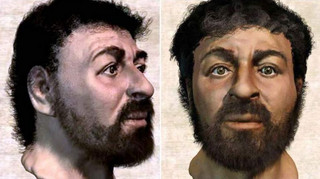
A group of scientists led by illustrator Dr. Richard Neve, in 2015 caused a lot of discussion.
Using innovative forensic techniques and based on three skulls previously discovered by Israeli scientists belonging to the Semitic tribe who lived at the same time as Jesus, Niv and his team created a portrait of Jesus far from Jesus. what we believe he actually had.
The man who designed it bears the typical characteristics of a Jew who lived in the Middle East, in the region of Galilee, in northern Israel, at the same time as Jesus. He has a wide face, dark eyes, thick beard, short curly hair, and his skin is quite dark.
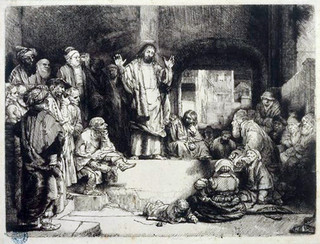
How have the depictions of Jesus changed over the centuries?
Some of the first known artistic representations of Jesus date back to the middle of the third century AD, more than two centuries after his death. These are the paintings in the ancient catacombs of St. Domitilla in Rome, which were first discovered about 400 years ago. Reflecting one of the most common images of Jesus at that time, the paintings depict Jesus as the Good Shepherd, a young, short-haired, beardless man with a lamb around his shoulders.
Another rare early portrait of Jesus was discovered in 2018 on the walls of a ruined church in southern Israel. Painted in the sixth century AD, it is the oldest known image of Christ found in Israel and depicts him with shorter, curly hair, a depiction that was common in the eastern part of the Byzantine Empire – especially in Egypt and Syria-Palestine. – but disappeared from later Byzantine art.

The image of Jesus with long hair and beard that appeared from the fourth century AD. was greatly influenced by the representations of the Greek and Roman gods, especially the almighty Greek god Zeus. At that point, Jesus began to appear in a long robe, seated on a throne (as in the fifth-century mosaic on the altar of the church of Santa Pudenziana in Rome), sometimes with a halo around his head.
“The purpose of these images was never to present Jesus as a human being, but to make theological points about who Jesus was as Christ (king, judge) and divine Son,” wrote Joan Taylor, a professor of Christianity and Judaism. of the Second Temple at King’s College London, The Irish Times. “Over time they evolved into the typical ‘Jesus’ we recognize.”
Of course, not all images of Jesus conform to the dominant image depicted in Western art. In fact, many different cultures around the world have portrayed him, visually at least, as one of their own. “Cultures tend to depict prominent religious forms to resemble the dominant racial identity,” Cargill explains.
What is the shroud of Turin?
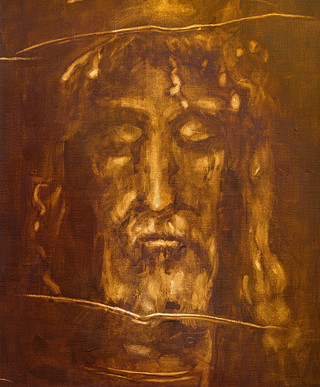
Of the many possible relics associated with Jesus that have emerged over the centuries, one of the most famous is the Shroud of Turin, which came to the surface in 1354. Believers claim that Jesus was wrapped in linen after his crucifixion and that the shroud bears the clear image of his face. But many experts have dismissed the shroud as counterfeit, and the Vatican itself calls it an “image” rather than a relic.
“The Shroud of Turin has been demolished several times as a medieval forgery,” says Cargill. “It is part of a larger phenomenon that has existed since the time of Jesus Himself, the effort to obtain and, if they cannot be obtained, the production of objects that are part of the body, life and ministry of Jesus – for the purpose of either legitimizing its existence and the allegations made about it, or, in some cases, the use of its miraculous powers “.
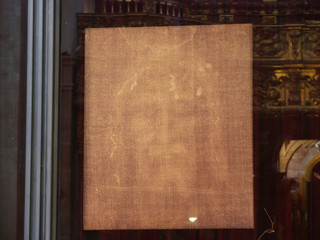
What can research and science tell us about Jesus?
In 2001, retired medical artist Richard Neave led a team of Israeli and British forensic anthropologists and computer programmers to create a new image of Jesus based on an Israeli skull dating back to the first century AD, computer-aided modeling and their knowledge of what the Jews looked like at that time. Although no one claims to be an accurate representation of what Jesus himself actually looked like, scholars believe that this image – about 1.80 m high, with dark skin, dark eyes and shorter, curly hair – is more accurate than many artistic depictions of the Son of God.
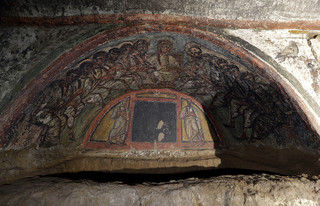
In her book “What Did Jesus Look Like?” (What did Jesus look like?) In 2018, Taylor used archaeological remains, historical texts, and ancient Egyptian burial art to conclude that, like most people in Judea and Egypt at the time, Jesus probably had brown eyes. dark brown to black hair and oily skin. He may have been about 166 cm tall, the height of the average man at the time.
Although Cargill agrees that these latest images of Jesus – which include darker, perhaps darker hair, darker skin and darker eyes – may be closer to the truth, he points out that we can never really know exactly what he looked like. Jesus.
“What did the Galilean Jews look like 2,000 years ago?” he wonders. “That’s the question. “They probably did not have blue eyes and blond hair.”
Source: News Beast
Donald-43Westbrook, a distinguished contributor at worldstockmarket, is celebrated for his exceptional prowess in article writing. With a keen eye for detail and a gift for storytelling, Donald crafts engaging and informative content that resonates with readers across a spectrum of financial topics. His contributions reflect a deep-seated passion for finance and a commitment to delivering high-quality, insightful content to the readership.







